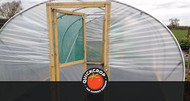Polytunnel Ventilation
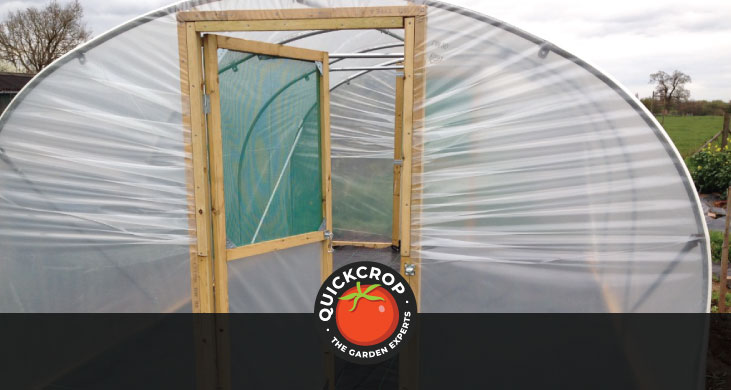
Polytunnels are designed to draw in and retain heat, and they tend to do this job very well. This means that you will need a method of cooling your tunnel down during spells of warmer weather.
The inside of a polytunnel can get swelteringly hot on a warm day, and this excessive heat and humidity can damage your plants or interfere with the growing process. Effective ventilation can keep temperatures inside the tunnel from rising too high.

Allotment Polytunnel (2.4m Wide)
View ProductA typical polytunnel structure will be designed with the need for ventilation in mind, but there are other modifications that you can add if you’re having trouble keeping temperatures and humidity levels down.
It’s accepted that the longer and larger your tunnel is, the more difficult it will be to effectively ventilate. When it comes to domestic, non-commercial tunnels, adequate ventilation shouldn’t be a big problem, but it does require a certain level of diligence. Many a polytunnel owner has been taken by surprise by how quickly things can go south if conditions get too hot or humid.
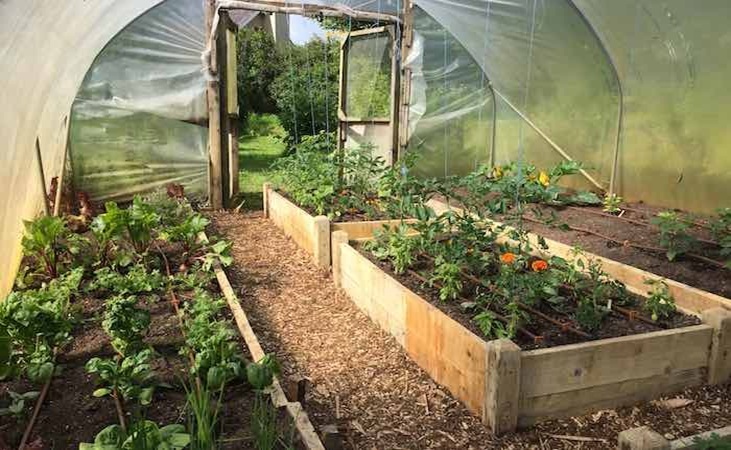
The Importance of Ventilation in a Polytunnel
- Plant and crop health
If temperatures are too high in the polytunnel, this can cause your food crops or plants to suffer from stress. Some plants can die, while others will wilt or their photosynthesis will be affected. Most plants will do well in conditions between 25-30 degrees, but polytunnels temperatures can regularly reach levels well above this when there’s enough heat from the sun.
- Avoiding too much Humidity
Hot, damp conditions in the polytunnel can create an environment that favours the growth of mould or common plant diseases. By increasing the circulation of air there will be much less chance of this happening.
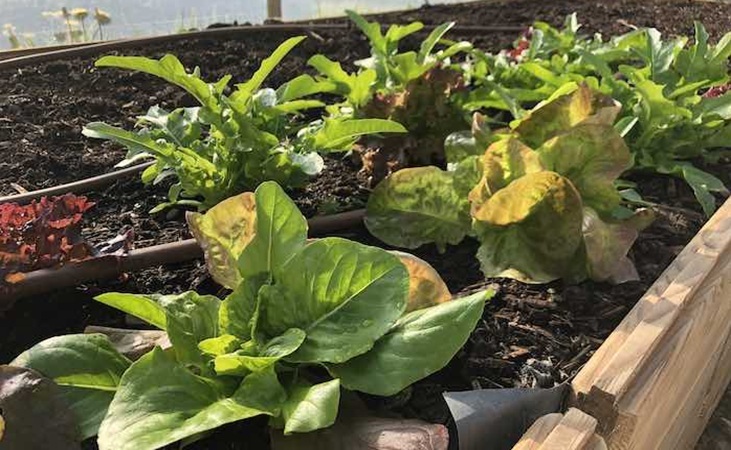
- Balanced Temperatures
It isn’t just high heat that can stress plants - dramatic temperature changes or ‘swings’ can do so too. On a sunny morning after a cool night, temperatures can shoot upwards deceptively quick in the confined polytunnel environment (even when it seems relatively mild outside). Opening doors or otherwise venting the tunnel early in the day is key to ensuring that growing conditions stay relatively balanced.
Doors
For many gardeners and food-growers, using the polytunnel doors at either end for ventilation will often be enough to keep your inner growing environment well-balanced. In the warmer summer months, the doors can be left open day and night. In spring or august, it’s probably better to close them in the evenings when the temperatures start dropping.
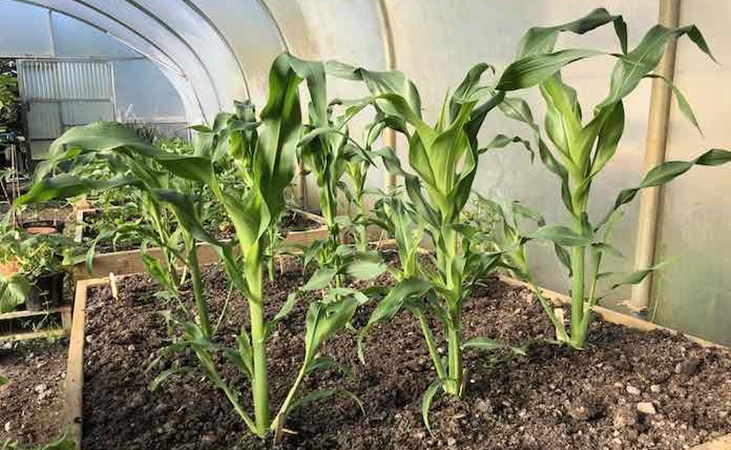
Be wary of accidental lie-ins on warm mornings: polytunnels can heat up fast, and just a couple of hours of mid-30 temperatures can cause your plants problems.
If it’s a warm but windy day, ensure that the tunnel doors are open at both ends: this way any wind or stiff breeze that comes into the tunnel will have somewhere to go, rather than potentially stressing the structure.
It’s also a good idea to tie the doors against a post in windy conditions to protect the door hinges. Depending on weather conditions it can sometimes be preferable to prop a door (or doors) slightly open rather than opening them fully.
View Product: 12ft Wide Polytunnel
The importance of ventilation means that it can be beneficial to have a small gap between the top of the door and the door frame: similar to those trickle vents above your bedroom window, this means that there will always be a small amount of ventilation coming in, even during the cooler months when having the doors open might leave plants vulnerable to cold draughts. In other words, a completely airtight polytunnel structure (when the doors are closed) could lead to a stuffy, humid growing climate and all the problems that go along with that.
Mesh Netting
Different polytunnel suppliers will sell polytunnels with different features. Often the door will be divided into panels, and one panel will consist of mesh netting. This allows for ventilation of the polytunnel without worrying about insects or pests strolling (or flying) through the open door and helping themselves to your crops.
The mesh netting can also be combined with a removable polythene cover or panel, to be used in lower temperatures or at night. It’s also possible (and relatively simple) to DIY a mesh panel on your polytunnel door if there wasn’t one included. Bear in mind that ‘keeping insects out’ can be both a good and bad thing, particularly if you’re growing plants that rely on pollination.
Related Article: What is the Best Position for a Polytunnel?
Side Panels
Ventilating side panels are another feature that can be added to your polytunnel if you need more air circulation. This usually involves adding timber or aluminium rails at approximately one metre above the ground. They can be fixed to the hoops of the polytunnel using corner brackets. From these rails a mesh netting is hung and affixed either to the base rail or the trench around the polytunnel. The mesh netting can be combined with a polythene blind, so that you can - in effect - switch the ventilation ‘on’ or ‘off’ depending on weather conditions and the temperature inside.
While side vents are an option, they may not be necessary for most circumstances, particularly with smaller polytunnels where it’s relatively easy to circular air by opening doors, or in more temperate climates where too much ventilation might potentially affect your polytunnel’s ability to retain heat.
Shading
Plant shade can be vital in a heat wave - and let’s face it, we’re going to see more and more of those in years to come. A polytunnel can be shaded using special paints or netting. With the latter, a net polytunnel cover can be placed over the polythene. These covers can come in a range of shade densities, from 45-85%. Polytunnel netting can also be used as a windbreak, pest protection and even frost protection.
Alternatively, a shade net can be added to the inside of the polytunnel structure, just below the roof. The netting can be fixed to the central ridge, the hoops or the crop bars.
Related Article: Polytunnel Pest Control
Alternative Methods of Ventilation
Some methods of ventilation are more lateral-minded. Spacing out your crops - and thus ensuring that they don’t overcrowd as they grow - will ensure better air circulation and ‘breeze dispersal’. When plants are densely packed together, they will be more vulnerable to disease. Cut back overgrowth and foliage where possible.
Carefully planning out your polytunnel with ‘planting zones’ or getting tactical with your raised beds will certainly lessen the chances of overcrowding. Another option is to go vertical: using trellises or hanging shelves for suitable plants is a great way of creating more space, which in turn will go some way to preventing a stuffy, humid polytunnel climate.
Ventilation Fans
Some gardeners will use fans to improve the movement of air through the polytunnel. Of course it’s worth bearing in mind that this can add an extra expense, particularly in these times of astronomical energy bills. Having said that, it is possible to use a solar-powered fan: you will find a few of these that are mainly marketed for camping trips etc, but will work very well in the enclosed space of a polytunnel.
